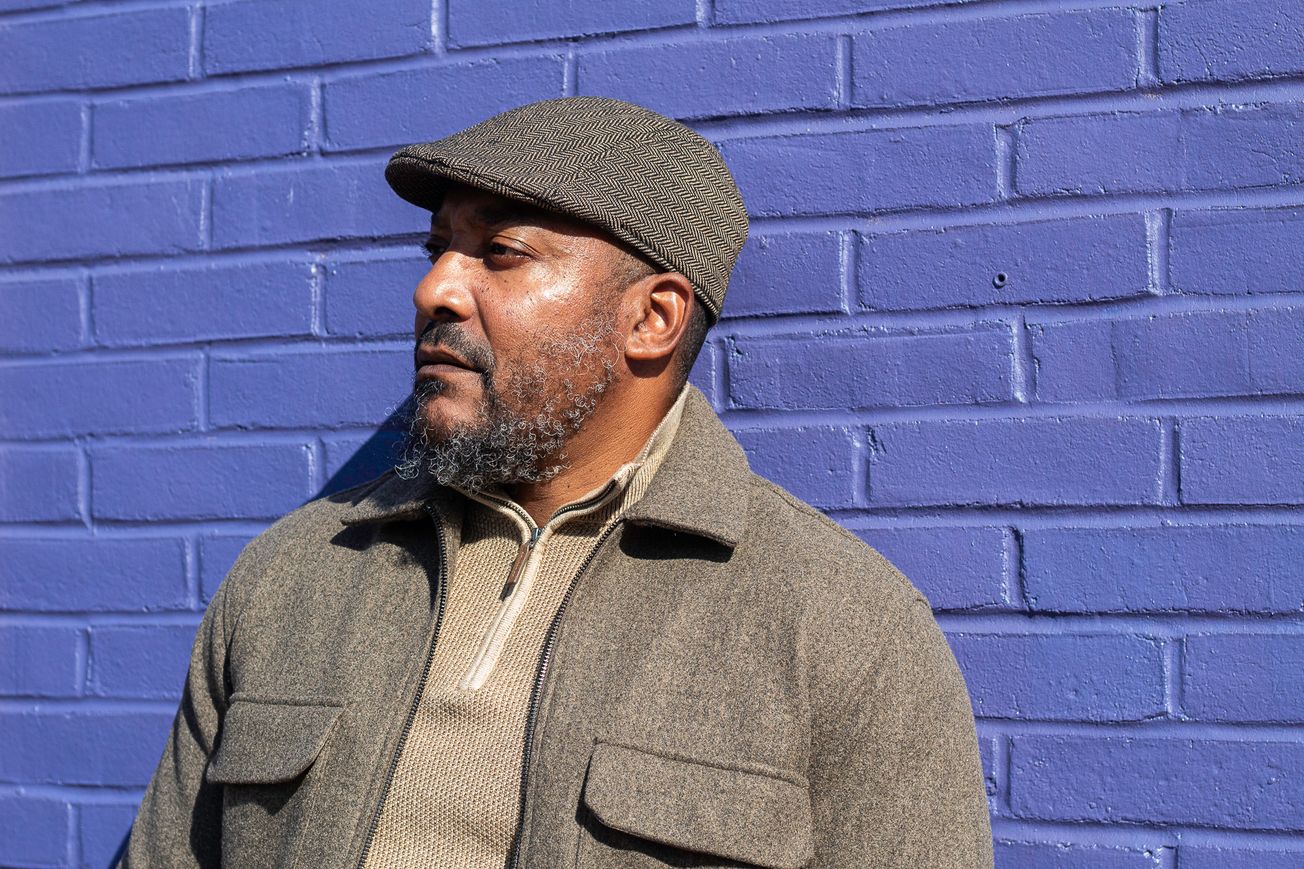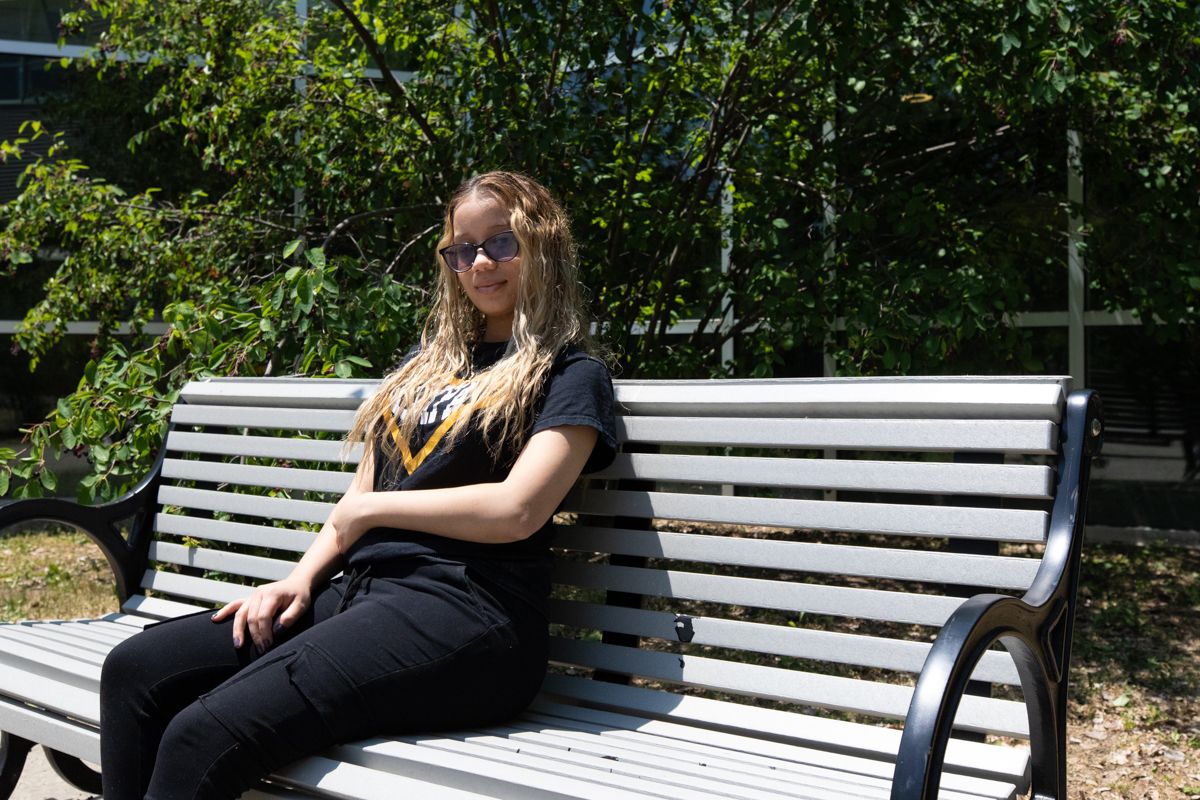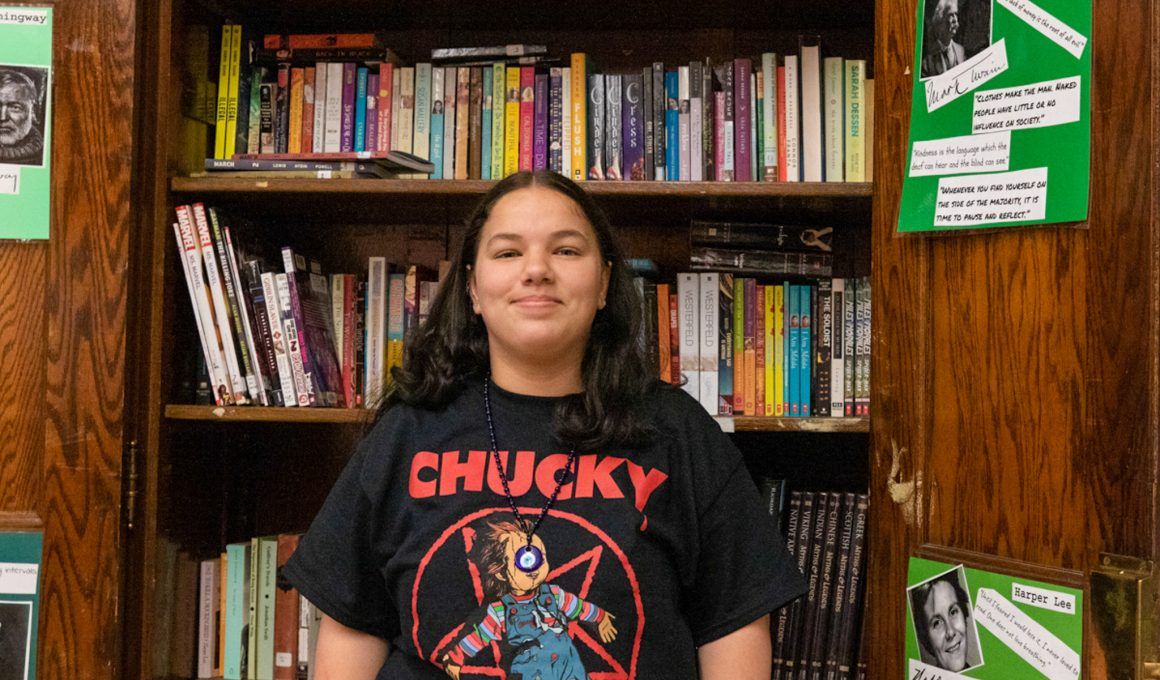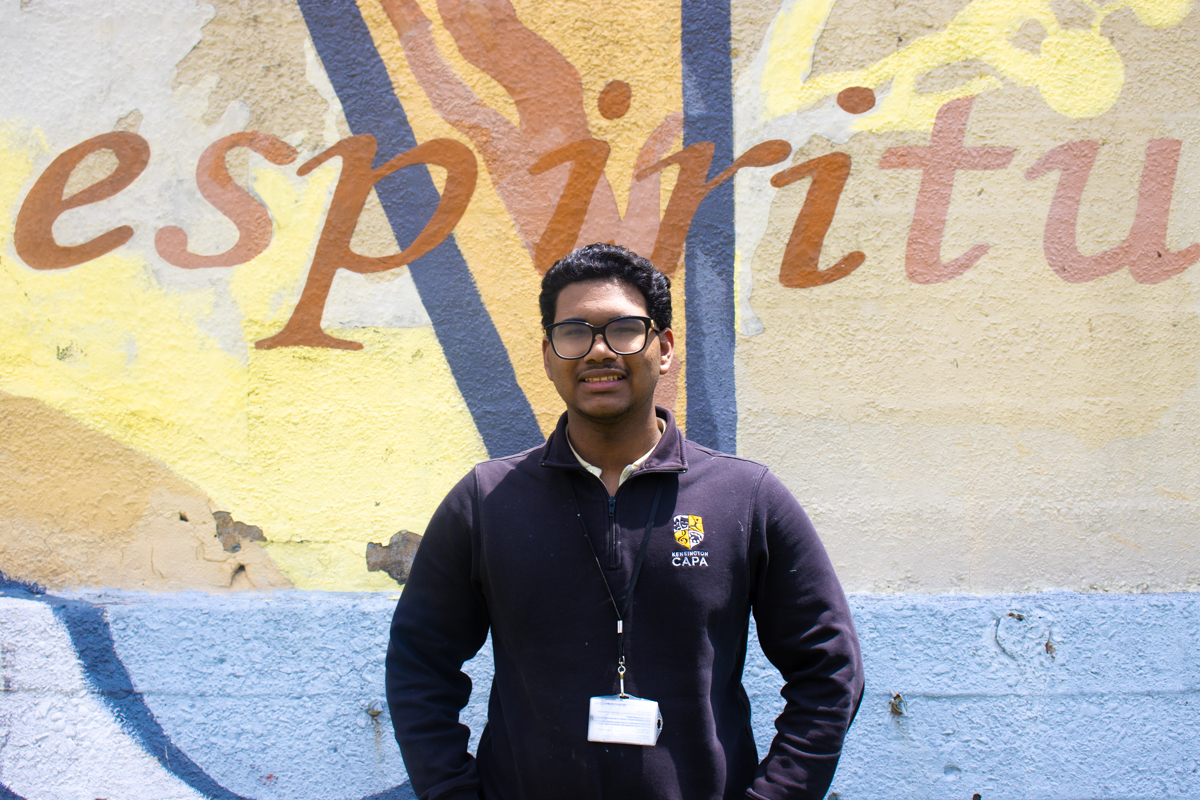On March 13, mother-daughter duo Neyda Rios and Daisie Cardona talked with Claire Wolters, the Kensington Voice Voices editor, about cleaning up trash and needles from neighborhood parks like McPherson Square, and their passion for community beautification. Rios is a block captain and seasonal maintenance assistant for the City of Philadelphia, and Cardona is enrolled in 11th grade at Kensington Health Sciences Academy. She’s also a member of Stay True Philadelphia, a group of 16 teenagers that plants gardens and works on other initiatives such as clothing drives in the community.
In an ideal world, what happens with all these needle cleanups? What could Kensington be if it was…?
Neyda: Cleaned up?
Claire: Yeah!
Daisie: I don’t know. It’s been a long time since you haven’t had to watch where you’re walking for needles. But I think it’d be really cool.
Neyda: Until there’s no more addiction, there will be no end to the needles. …Right now, it seems like it’s getting a little better. But at the same time, I’m out here every day, so I see how much homelessness is still out here.
As someone who is growing up in Kensington, do you think there is more awareness for children about the need to clean or inspect the ground?
Daisie: Growing up like that, it’s really kind of normal. Some of the kids, they moved away to different neighborhoods. But [for] the kids I grew up with, it’s instinct. [But] our neighbors are amazing. They’ve got their downsides, but they’re amazing people and that’s the way the neighborhood is.
Neyda: As we were on the clean up the other day, I was so mad because one of the people that was in the van kept referring to [McPherson] as ‘Needle Park.’ Just because you’re not from the area, you don’t have to trash talk the neighborhood. What are you volunteering for? I said, ‘If my daughter was here and heard you call McPherson Park, ‘Needle Park,’ she would go off on you.’
Daisie: I actually had to correct a couple of kids who aren’t from this neighborhood about that. You know that people don’t talk about the neighborhood right, but it’s in your face when you hear somebody who’s not from Kensington calling the neighborhood ‘Needle Park.’
Tell me more. Why does that hurt so much?
Neyda: Because there’s so much being done in the community. The people from the community itself are working together to get things done, not only picking up needles and picking up trash [but] also working with other organization[s].
Would it be correct to say that part of beautifying the community is respecting the language in which you talk about it?
Neyda: Definitely. A lot of us have been in the neighborhood for a long time. We’ve all been out here working and then all of a sudden all these other people are coming in. When they talk about it in such a negative manner, it really does get you frustrated. If it wasn’t for the gentrification going on in the neighborhood, they wouldn’t be looking at Kensington.
What are some of the highlights that should be more recognized?
Neyda: I’m glad to see businesses coming back to the people… that they actually care and they’re trying to do something.
Daisie: It seems like just yesterday nobody was paying attention to Kensington, then all of a sudden there’s businesses popping up everywhere and people coming into the neighborhood once a month or so cleaning up.
Neyda: We all try to work together [to keep the neighborhood clean]. You see a difference in the neighborhood because it’s clean.
What are some changes that you can see?
Neyda: I’ll give you an example. On the very corner on Emerald and Madison, there’s an empty lot. We all came together and started cleaning the lot. We had been trying to get a hold of the lot and make a play area for the kids. Now, somebody purchased a lot — this was a project I wanted to do last year — but then somebody purchased the lot. We collected a lot of hubcaps and we were going to take the hubcaps and paint them with flowers. We’ll turn them, place them on a wood stick, draw pedals… we were going to take the hubcaps after the kids were finished with the activity and let them dry, and kind of make a fence and leave an opening — until the owner comes and completely takes over. He can take them down if he wants to — we’ll just put them in the dirt [so they’re not] permanent. We’re still going to do it. …I think we have about 40 hubcaps.
That’s fun. When are you planning to do the hubcap garden?
Neyda: In the summertime. That will be one of the activities that we’ll do [with Playstreets.] My idea for that was to have the kids do something beautiful with the lot and have them be able to see their work. As people drive by, they’re going to see that, go ‘Wow, that’s nice,’ and maybe ask [about the project]. They’ll be able to tell that it’s made by the kids. It brings ideas for what other neighborhoods could do. They’ll be honored. With the fencing like that, it will be harder for people to dump trash in it and we can keep the weeds down.
Do kids’ gardens or movie nights encourage people to care for the community?
Neyda: One of the missions that we have had since last year is to teach the kids how to garden. The kids learn how to plant things, how to take care of things — because if they plant it, they’re going to take care of it. They’re not going to let [others] come and destroy it.
What did you think about this story? Send a note to editors@kensingtonvoice.com, and we’ll consider publishing it in our Voices section. You can also tell us what you think in person at our neighborhood events.
Editor: Claire Wolters / Story Designer: Jillian Bauer-Reese / Translator: Kristine Aponte





